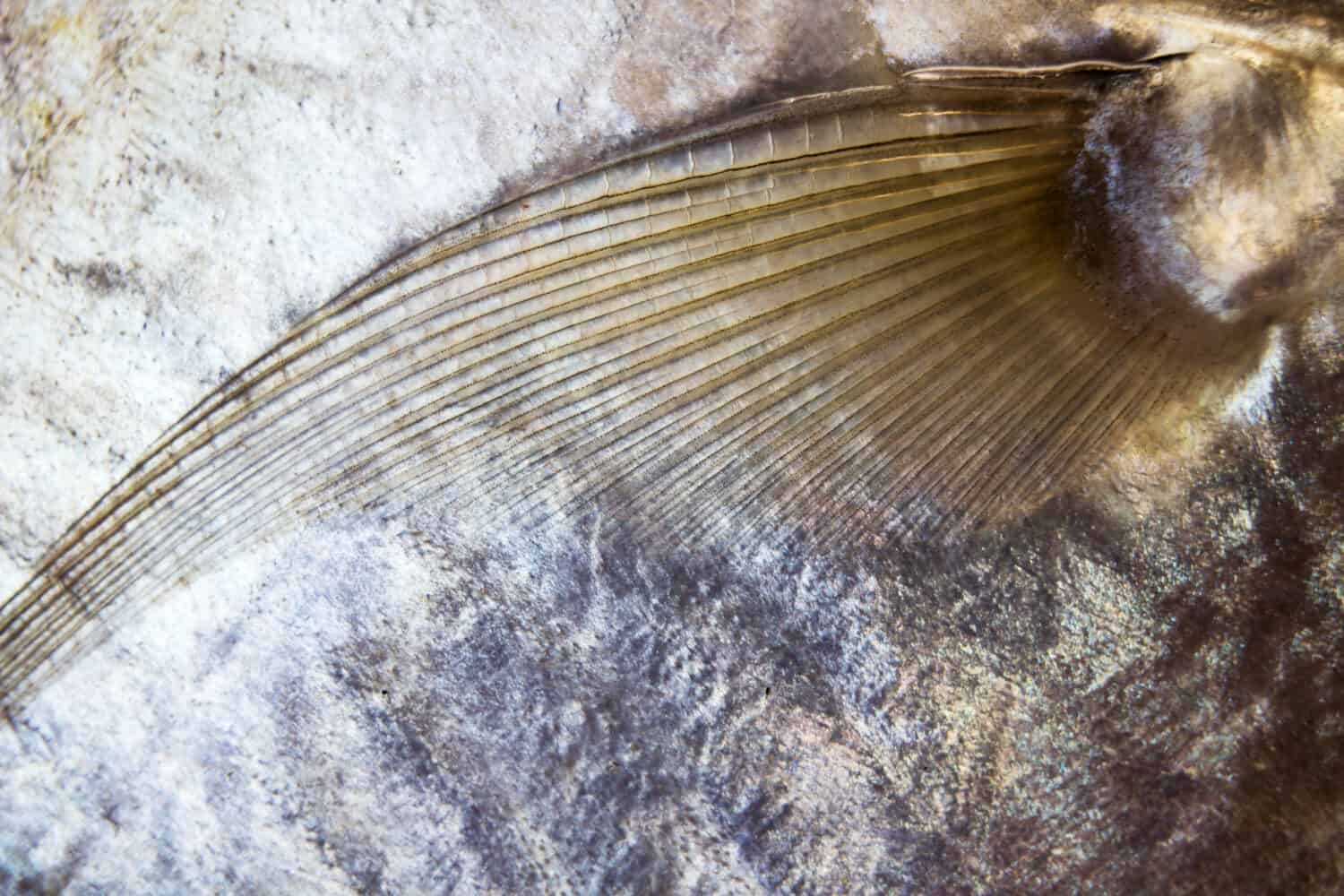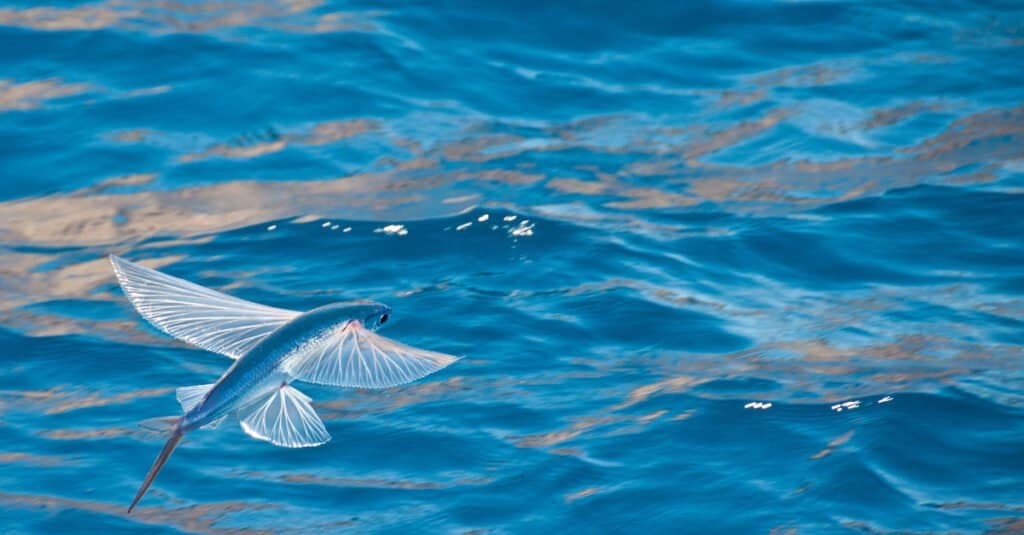The majority of fish species, whether freshwater or marine, have two pectoral fins that are located on each side of their body, typically below the gills. The pectoral fins are one of the paired fins located on each side of a fish or marine mammal. They are part of the seven total fins of most fish and aid in locomotion. Many fish rely on their pectoral fins to move through the water and stabilize them. These fins aid with movement and serve a purpose for many aquatic creatures, from the smallest fish – the photocorynus spiniceps, to the biggest marine animal – the blue whale. Not all aquatic vertebrates have pectoral fins, and certain species like eels lack these paired fins.
Anatomical Structure of Pectoral Fins

The pectoral fins aid with movement and serve a purpose for many aquatic creatures.
©Happy cake Happy cafe/Shutterstock.com
The paired pectoral fin ranges in appearance depending on the type of aquatic vertebrate it attaches to. They are vertical to the animal’s body and can take on an appearance of either hand-like, paddled, spiny, winged, or standard. Bone, cartilage, and soft tissue make up the pectoral fins, and bony or soft rays connect to the central part of a fish’s bone structure. Additionally, they protrude from the animal’s body. Lastly, they vary in size depending on their function and the size of the animal.
Hand-Like
Some pectoral fins are hand-shaped, broaden at the end, and fan out. These are useful for fish that crawl on the bottom of the ocean or lake.
Paddled
The paddle-shaped pectoral fin has a more angular appearance. Fish that prefer to swim more slowly in the water have these fins.
Spiny
The pectoral fin has a sharp series of points patterning the pectoral spine. These spines are usually sharp and may inject venom. If this is the case, a layer of venom gland tissue lies below the row of spines.
Winged
These fins are usually large and placed higher on the fish’s body with an angled tip. They aid with types of swimming, such as gliding and soaring.
Standard
Standard fins are slightly squared and angled proportionate to the fish’s body. Fish use them to move in the water.
Examples Of Animals with Pectoral Fins

A flying fish’s pectoral fins are highly modified “wings” that enable them to leap out of the water and glide above the surface of the water.
©Daniel Huebner/Shutterstock.com
- Mudskipper
- Goldfish
- Pictus catfish
- Dwarf gourami
- Koi
- Wrasses
- Angelfish
- Clownfish
- Flowerhorns
- Discus
- Flying fish
- Pufferfish
- Gurnard
- Sharks
- Whales
How Does a Pectoral Fin Function?
The main function of a pectoral fin is to aid with locomotion for various aquatic animals. It allows them to swim, steer, glide, soar, dig, or move in the water. Various aquatic vertebrates move by oscillating their pectoral fin. Along with the median fins, fish is able to maneuver their bodies sideways, backward, forwards, downwards, and upwards using their pectoral fins. Some animals primarily use their fins for swimming and stability in water, while fish such as mudskippers will use their pectoral fins for locomotion on land.
The flying fish have adapted to use their modified pectoral fins to leap and glide above the water for long distances. The strong pectoral fins of sharks and whales allow them to lift and hold their heavy bodies while enabling them to propel themselves in the water. The animal is able to move their pectoral fin by activating the muscles at the base of the fin.



